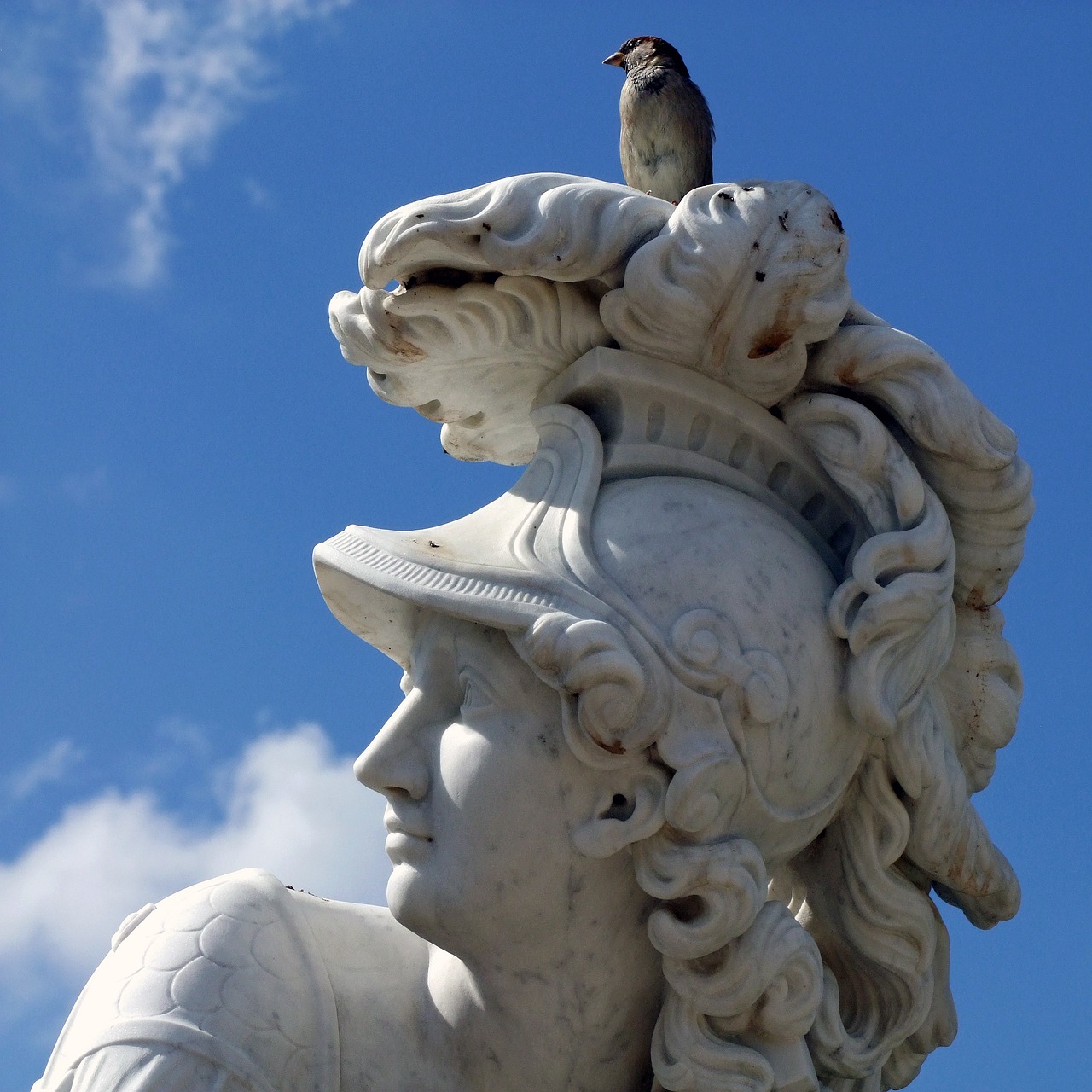Overview
Minerva stands as the embodiment of wisdom among the gods of Rome, revered for her intellect, craftsmanship, and artistic inspiration. She presides over all matters that require careful planning and consideration from her heavenly vantage point. In time, she was also regarded as a deity of warfare, becoming a goddess from whom strategic thoughts flowed. Together with Jupiter and Juno, Minerva formed part of the Capitoline Triad, a crucial divine ensemble in Roman religion.
An 18th-century representation of Minerva showcases her in traditional attire, complete with a floor-length chiton and an aegis marked by the head of Medusa, believed to protect against malevolence. With a shield in her possession and a Corinthian helmet pushed back, her features are visible, highlighting her strength.
Minerva may be viewed as the most authentically Roman of all the deities. Unlike figures such as Jupiter and Neptune, who were directly borrowed from Greek mythology, she has roots in an Etruscan entity known as Menrva. Her evolution continued, adopting attributes of Athena as Roman culture integrated more Greek customs. Eventually, Minerva replaced Mars in the Archaic Triad, signifying a shift in Rome’s identity as it transitioned from a local power to a dominant influence across the Mediterranean.
She garnered reverence from various sectors, including artisans, traders, politicians, soldiers, artists, and thinkers. Many temples were dedicated to Minerva throughout the Roman Empire, with numerous festivals celebrating her contributions. However, as Christianity ascended during the fourth century CE, the veneration of Minerva began to wane.
Etymology
The name “Minerva” is derived from the Etruscan deity Menrva, possibly linked to Menerwā. This Etruscan appellation was influenced by an earlier Italic deity known as Meneswā or Menes-wo, signifying attributes such as remembrance, knowledge, or measurement. Additionally, the name shares origins with the Hindu goddess Manasvini, associated with virtue and intelligence.
Attributes
Minerva is regarded as the wisest of all divinities, using her sharp intellect to achieve her goals. As a goddess devoted to purity, she rejected the advances of both gods and mortals. One artistic representation of her, the “Minerva of Peace” mosaic in Washington D.C.’s Library of Congress, depicts her with a laurel wreath symbolizing victory and a palm branch indicating peace. Even though she sets aside her helmet and shield, she holds a spear, representing her eternal vigilance.
Wearing a chiton—a flowing robe—alongside a laurel crown symbolizes her peaceful aspect, while as a warrior goddess, she is often depicted in the armor of a Roman general, showcasing her prowess in battle.
Family
Minerva is recognized as the daughter of Jupiter and Metis, who belongs to the lineage of Titans. Jupiter fathered several half-siblings of Minerva, including Mars, Bellona, and Vulcan, as well as Mercury, Venus, and Proserpina. Notably, Minerva never conceived any offspring and did not engage in marriage.
Mythology
Minerva’s birth myth reflects closely those attributed to Athena in Greek mythology. The tale ignites from Jupiter’s infidelities, particularly with Metis, leading to a prophecy foretelling his potential downfall by one of his descendants. To avert this outcome, Jupiter swallowed Metis and her unborn child. However, Minerva, while in the womb, planned her emergence and eventually erupted from her father’s forehead, fully matured.
Virgil’s “Aeneid” portrays her as initially adversarial toward the founding of Rome, nursing a deep grudge against Aeneas, the Trojan hero. Her cunning led to the creation of the Trojan horse, a critical point in the defeat of Troy. Though relentless in seeking revenge, Aeneas’ respect for Minerva manifested when he carried her statuette during his journey, earning her goodwill.
Minerva and the Arachnids
In a narrative from Ovid’s “Metamorphoses,” Minerva relates to the origin of spiders through the story of Arachne, an exceptional weaver. Arachne’s pride led her to claim superiority over Minerva in her craft, inciting the goddess’s wrath. After a competitive weaving session, where Arachne depicted gods in unfavorably mortal situations, Minerva punished her by transforming her into a spider, thus explaining the existence of these creatures as a result of hubris.
Minerva and Roman State Religion
Minerva held a significant position within Roman worship, guiding various aspects of life and revered for wisdom and military achievement. The Temple of Minerva Medica, located on the Esquiline Hill, was dedicated to her healing aspects, while her main temple, designated as “Aventine Minerva,” served as a center for artisans and intellectuals. Festivals celebrating her impact were common, including the prominent Quinquatria, a series of five days dedicated to her in mid-March, coinciding with the military campaign season of Rome.
Pop Culture
Minerva’s influence extends into contemporary culture, evident in numerous statues around the world, including prominent locations in Italy and Mexico. Her image also appears on the seals of various educational institutions, symbolizing knowledge and patience. Notably, her representation adorns California’s state seal, where she embodies a figure of military strength and insight over San Francisco Bay.



